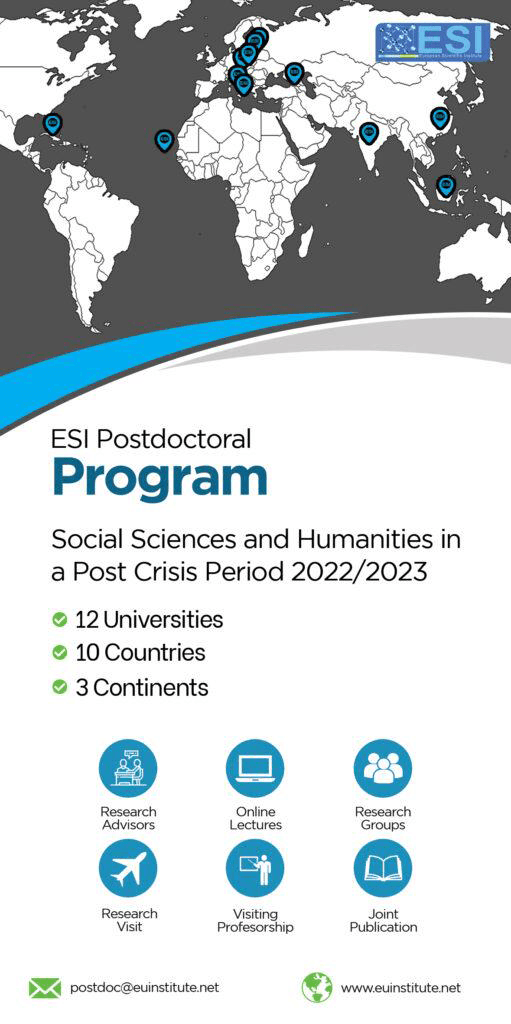Civic Education as Economic Infrastructure: The Way Towards Economic Development
Abstract
Respect for rules is a structural pillar of well-functioning societies and modern economies, serving as a prerequisite for stability, trust among economic actors, and sustainable development. However, compliance cannot be assumed to arise spontaneously or emerge only when convenient. Rather, it is the result of long-term educational and cultural processes deeply embedded in social institutions, most notably the family and the school system. This paper explores the importance of educating individuals to respect rules as a strategic investment in collective well-being, social cohesion, and institutional quality. Drawing on an institutionalist perspective, it argues that when rule compliance is learned early and through consistent experiences, it fosters trust in institutions, civic engagement, and economic legality. Family and School - as the primary interface between individuals and the normative system - play a crucial role in shaping both civic and social capital. Scholars such as Heckman, North, Acemoglu, and Nussbaum have shown that investments in early childhood education and schooling have positive effects on economic productivity, crime reduction, and democratic participation. If well-designed and widely implemented, education for rule compliance can strengthen the moral and economic foundations of contemporary democracies, promoting a model of development that is fairer, more inclusive, and sustainable. This contribution aims to reaffirm the centrality of education policies - especially those focused on respect for rules and people - as tools for preventing illegality and driving development. It emphasizes the need for coordinated efforts among schools, families, and public institutions to build a citizenry that is aware, cooperative, and respectful of the rules that govern both economic and social life.
Downloads
Metrics
PlumX Statistics
References
2. Acemoglu, D., Johnson, S., & Robinson, J. A. (2001). The Colonial Origins of Comparative Development: An Empirical Investigation. American Economic Review, 91(5), 1369–1401. https://doi.org/10.1257/aer.91.5.1369
3. Barrios, J., Benmelech, E., Hochberg, Y., Sapienza, P., & Zingales, L. (2021). Civic capital and social distancing during the covid-19 pandemic☆. Journal of Public Economics, 193, 104310.
4. Casamonti, M., & Liaci, S. (2021). La qualità delle istituzioni pubbliche nelle province italiane. Osservatorio sui conti pubblici italiani. OCPI.
5. Coase, R. H. (1937). The nature of the firm. Economica, 4(16), 386–405. https://doi.org/10.1111/j.1468-0335.1937.tb00002.x
6. Feld, L. P., & Frey, B. S. (2007). Tax Compliance as the Result of a Psychological Tax Contract: The Role of Incentives and Responsive Regulation. Law & Policy, 29(1), 102-120.
7. Ginwright, S. (2007). Black youth activism and the role of critical social capital in black community organizations. American Behavioral Scientist, 51(3), 403-418.
8. Glaeser, E. L., La Porta, R., Lopez-de-Silanes, F., & Shleifer, A. (2004). Do Institutions Cause Growth? Journal of Economic Growth, 9(3), 271-303.
9. Guiso, L., Sapienza, P., & Zingales, L. (2011). Civic capital as the missing link. Handbook of social economics, 1, 417-480.
10. Heckman, J. J. (2006). Skill Formation and the Economics of Investing in Disadvantaged Children. Science, 312(5782), 1900-1902.
11. Heckman, J. J. (2012). The Developmental Origins of Health Inequality. Annual Review of Economics, 4, 37-72.
12. Heckman, J. J., & Masterov, D. V. (2007). The Productivity Argument for Investing in Young Children. Review of Agricultural Economics, 29(3), 446-493.
13. Heckman, J. J., Moon, S. H., Pinto, R., Savelyev, P. A., & Yavitz, A. (2010). The Rate of Return to the HighScope Perry Preschool Program. Journal of Public Economics, 94(1-2), 114-128.
14. Mencken, F., Bader, H., & Polson, E. (2006). Integrating civil society and economic growth in Appalachia. Growth and Change, 37(1), 107-127.
15. Nifo, A., & Vecchione, G. (2014). Do institutions play a role in skilled migration? The case of Italy. Regional studies, 48(10), 1628-1649.
16. North, D. C. (1990). Institutions, Institutional Change and Economic Performance. Cambridge University Press.
17. North, D. C., Wallis, J. J., & Weingast, B. R. (2009). Violence and Social Orders: A Conceptual Framework for Interpreting Recorded Human History. Cambridge University Press.
18. Nussbaum, M. C. (2010). Creating Capabilities: The Human Development Approach. Harvard University Press.
19. Olson, M. (1965). The Logic of Collective Action: Public Goods and the Theory of Groups. Harvard University Press.
20. Ostrom, E. (1990). Governing the Commons: The Evolution of Institutions for Collective Action. Cambridge University Press.
21. Rodrik, D., Subramanian, A., & Trebbi, F. (2004). Institutions Rule: The Primacy of Institutions Over Geography and Integration in Economic Development. Journal of Economic Growth, 9(2), 131-165.
Copyright (c) 2025 Raffaella Patimo

This work is licensed under a Creative Commons Attribution 4.0 International License.








